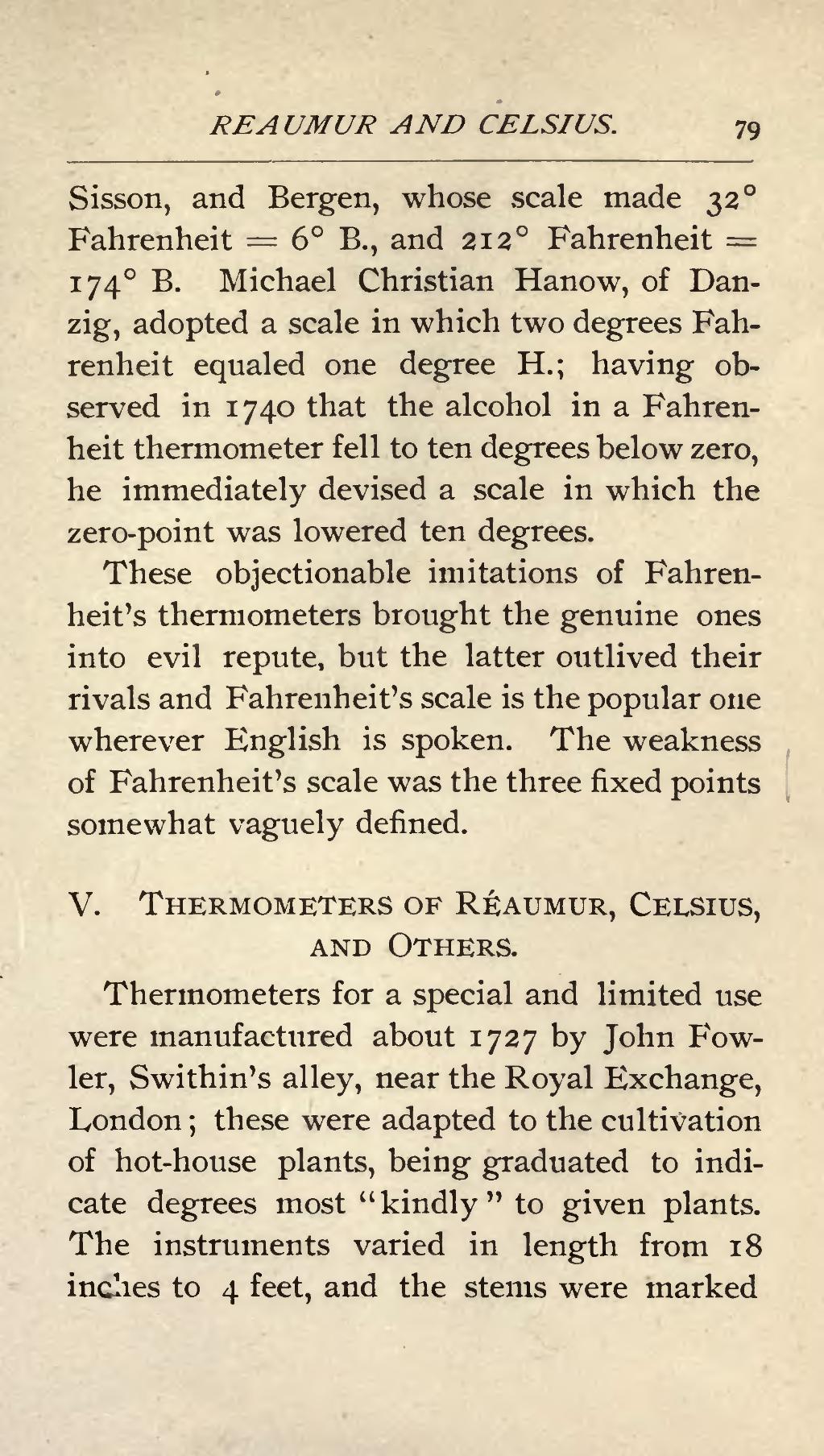Sisson, and Bergen, whose scale made 32° Fahrenheit = 6° B., and 212° Fahrenheit = 174° B. Michael Christian Hanow, of Danzig, adopted a scale in which two degrees Fahrenheit equaled one degree H.; having observed in 1740 that the alcohol in a Fahrenheit thermometer fell to ten degrees below zero, he immediately devised a scale in which the zero-point was lowered ten degrees.
These objectionable imitations of Fahrenheit's thermometers brought the genuine ones into evil repute, but the latter outlived their rivals and Fahrenheit's scale is the popular one wherever English is spoken. The weakness of Fahrenheit's scale was the three fixed points somewhat vaguely defined.
V. Thermometers of Réaumur, Celsius, and Others.
Thermometers for a special and limited use were manufactured about 1727 by John Fowler, Swithin's alley, near the Royal Exchange, London; these were adapted to the cultivation of hot-house plants, being graduated to indicate degrees most "kindly" to given plants. The instruments varied in length from 18 inches to 4 feet, and the stems were marked
